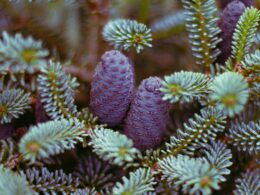Are you wondering whether or not you should cut back your hostas before the first frost hits? It’s a common question among gardeners, and the answer depends on a few key factors.
In this article, we’ll explore the debate surrounding cutting back hostas, the factors you should consider before making a decision, and how to properly cut back your hostas if you do decide to do so.
As a gardener, you want to ensure that your plants are healthy and well-protected throughout the changing seasons. Hostas are a popular choice for many gardeners, known for their lush foliage and easy maintenance. However, when the colder weather starts to roll in, it can be difficult to know how to properly care for your hostas.
Some gardeners swear by cutting back their hostas before the first frost, while others argue that it’s unnecessary and can actually be detrimental to the plant’s health. Let’s dive into the debate and help you make an informed decision for your own garden.
Understanding the Debate
While opinions may differ, understanding the debate surrounding the trimming of hostas prior to winter can help ensure their survival. Some gardeners believe that cutting back hostas before frost is necessary to prevent diseases and pests from overwintering on the plant. Others argue that leaving the foliage intact can provide protection for the plant during the winter months.
There are pros and cons to both sides of the debate. Cutting back hostas before frost can prevent diseases and pests from overwintering on the plant, which can reduce the likelihood of problems in the spring. However, cutting back the foliage too early can also leave the plant vulnerable to damage from frost and other environmental factors.
Expert opinions on the matter are mixed. Some recommend cutting back hostas before frost, while others suggest leaving the foliage intact. Ultimately, the decision to cut back hostas before winter will depend on a variety of factors, including the climate in your area, the health of your plants, and your personal preferences.
As with any gardening decision, it’s important to do your research and make an informed choice that will help ensure the health and longevity of your plants.
Factors to Consider
It’s important to consider a few factors before the cold weather sets in and you decide to cut back your hostas.
One of the main reasons to cut them back is to retain moisture, as hostas tend to have a lot of foliage that can trap moisture and lead to rotting. By cutting them back, you can prevent this from happening and ensure that your hostas remain healthy throughout the winter months.
Another factor to consider is pest control. Hostas are a favorite target of slugs and other pests, and cutting them back can help to reduce the risk of an infestation. By removing the foliage, you remove the shelter that pests use to hide and reproduce, making it less likely that they will take up residence in your garden.
Of course, there are also some downsides to cutting back your hostas before the frost. For one, you may miss out on some of the beautiful fall colors that they produce. Additionally, cutting them back too early can lead to stunted growth in the spring.
So, it’s important to weigh the pros and cons before making a decision. Ultimately, the choice will depend on your specific situation and goals for your garden.
Is Cutting Back Hostas Before Frost Necessary for Winter Survival?
Winter care for hostas includes cutting back the foliage before frost. While some gardeners prefer leaving the foliage intact, removing it helps prevent diseases and pests from overwintering. This practice also helps hostas maintain their energy throughout winter, ensuring survival and promoting healthy growth in the next season.
How to Cut Back Hostas
Get your garden ready for winter by learning how to properly trim your hostas, ensuring healthy growth in the spring. When it comes to pruning techniques, it’s important to use clean and sharp tools to prevent damage to the plant.
Begin by cutting back the leaves, starting from the outside and working your way inwards. This will allow you to see the center of the plant and remove any dead or damaged leaves. Be sure to leave a few inches of stem above the ground to protect the plant during winter.
Timing considerations are also key when cutting back hostas. It’s best to wait until after the first frost has occurred and the leaves have turned brown and wilted. This ensures that the plant has stored enough energy for the winter months. However, don’t wait too long, as cutting back too late can cause the plant to suffer damage from the cold weather.
Aim to trim your hostas back in late fall, before the ground freezes. In addition to proper pruning techniques and timing, it’s important to clean up any debris around the plant to prevent the spread of disease. Rake up any fallen leaves and dispose of them in the trash. This will also help to prevent any unwanted pests or diseases from overwintering in your garden.
By following these tips, you can ensure healthy and vibrant hostas in the spring.
Alternatives to Cutting Back Hostas
If you’re looking for alternatives to cutting back your hostas before frost, there are a few things you can do to ensure their survival through the winter.
First, consider providing winter covering and protection, such as burlap or frost blankets.
Second, mulch around the base of the plants to help insulate the roots and retain moisture.
Finally, prepare the soil by adding compost or other organic matter to improve drainage and nutrient availability.
By taking these steps, you can help your hostas survive the winter and come back strong in the spring.
Winter Covering and Protection
Protecting your plants during the winter months is crucial for their survival and ensuring a beautiful garden for the following year.
One way to protect your hostas during the winter is by covering them with insulating containers or frost cloth. This will help to keep them warm and prevent any damage caused by the frost. Be sure to cover them before the first frost arrives and remove the coverings once the threat of frost has passed.
Another option for protecting your hostas is to add an extra layer of mulch around the base of the plant. This will help to insulate the roots and keep them warm during the winter months. Make sure to use a thick layer of mulch and avoid covering the crown of the plant.
By taking these steps to protect your hostas during the winter, you’ll be ensuring their survival and keeping your garden looking beautiful for years to come.
Mulching and Soil Preparation
Preparing your soil with mulch is an essential step in ensuring your hostas thrive in the upcoming growing season. Mulching benefits your plants in many ways, including retaining moisture, regulating soil temperature, and suppressing weed growth. The right amount of mulch can also prevent soil erosion and improve soil fertility, leading to healthier and more robust hostas.
When choosing your mulch, it’s crucial to consider the soil type your hostas are growing in. If your soil is heavy and clay-like, using a lighter material like straw or shredded leaves will help improve drainage and prevent waterlogging. For sandy soil, a heavier mulch like bark chips or compost can help retain moisture and nutrients.
Regardless of the soil type, always make sure to apply a layer of mulch that is at least two to three inches thick, and avoid piling it up against the plant’s stem to prevent rotting.
With proper mulching and soil preparation, your hostas will be well-equipped to withstand the winter and thrive in the following growing season.
Other Tips for Winterizing Hostas
Now that you’ve got your mulching and soil preparation covered, let’s dive into some other helpful tips for winterizing your beloved hostas.
First and foremost, it’s important to note that not all hostas are created equal when it comes to frost resistance. If you live in a colder climate, it’s best to choose hosta varieties that are known for their ability to tolerate colder temperatures. Some frost-resistant hosta varieties include ‘Blue Mouse Ears,’ ‘Frances Williams,’ and ‘Patriot.’
By choosing the right hosta variety, you can ensure that your plants are better equipped to handle the winter weather.
Another important tip for winterizing hostas is to avoid cutting them back before the first frost. While it may seem like a good idea to cut back the foliage, doing so can actually be detrimental to the plant’s survival.
Hostas rely on their foliage to collect and store nutrients that they need to survive the winter. By cutting back the foliage too soon, you’re essentially robbing the plant of its food source. Instead, wait until the first frost has blackened the foliage before cutting it back.
This will give the plant enough time to collect the nutrients it needs to survive the winter. Remember, proper winterization is key to ensuring that your hostas come back healthy and strong in the spring. With mulching benefits and frost-resistant hosta varieties, you can give your plants the best chance for success.
When Should Hostas Be Cut Back After Flowering?
Hostas finishing flowering suggestions vary, but it’s generally advisable to cut back the plant once its flowers have faded. This is usually done in late summer or early fall. Trimming the flower stalks helps redirect the plant’s energy towards root growth, ensuring better health and vigor for next year’s blooms. Additionally, removing old foliage can enhance the overall appearance of the hostas by giving them a more tidy and neat look.
Conclusion and Final Thoughts
You’ll feel confident about the future of your garden after reading this section, as it provides valuable insight on how to maintain your plants during colder weather.
Hostas are hardy plants that can survive the winter without much help, but there are some steps you can take to ensure they come back strong in the spring. Here are four tips for winterizing your hostas:
-
Cut back the foliage before the first frost. This is a personal preference, as some gardeners like to leave the foliage intact for added winter interest. However, cutting back the foliage can prevent diseases from overwintering and make it easier to clean up debris in the spring.
-
Mulch around the base of the plant. A layer of mulch will help insulate the roots and protect them from freezing temperatures. Use a natural mulch, such as shredded leaves or straw, and apply a layer about 2-3 inches thick.
-
Water the plants well before the ground freezes. Hostas need to be well-hydrated going into the winter to prevent desiccation. Give them a deep watering before the ground freezes, and then avoid watering them until the spring thaw.
-
Protect the plants from extreme temperatures. If you live in a very cold climate, consider covering your hostas with a layer of burlap or frost cloth. This will help prevent frost damage and keep the plants from drying out in the winter wind.
By following these tips, you can ensure that your hostas will survive the winter and come back strong in the spring.
Remember, every garden is different, so use your own judgment when deciding how to winterize your plants. With a little care, your hostas will thrive for years to come.
Frequently Asked Questions
Are there any specific hosta varieties that should not be cut back before frost?
When it comes to caring for your hostas during winter, there are non-pruning methods you can use to keep them safe from the frost. Hosta pruning techniques can be helpful in maintaining the plant’s shape and health, but some varieties should not be cut back before frost.
It’s important to do your research and know what type of hosta you have before deciding on a winter care plan. Some non-pruning methods for winter hosta care include mulching the soil around the plant, covering the plant with burlap or a frost blanket, and making sure the soil stays moist but not waterlogged.
By taking these precautions, you can ensure your hostas survive the winter and come back strong in the spring.
Can cutting back hostas too early or too late have negative effects on their growth?
Cutting back your hostas too early or too late can have a negative impact on their growth. If you prune your hostas too early, they may not have enough time to store the nutrients they need for the winter. This can lead to stunted growth and weaker plants in the spring.
On the other hand, if you prune your hostas too late, the frost can damage the new growth that has already started to form. This can result in a slower start to the growth in the spring. It’s important to prune your hostas at the right time to ensure that they have the best chance for healthy growth.
Keep in mind that the timing may vary depending on your climate and specific hosta varieties.
Is it necessary to cut back hostas every year before frost, or can it be done every other year?
You may be wondering whether it’s necessary to cut back your hostas every year before frost. The truth is, there are benefits to leaving your hostas uncut.
For one, the foliage can provide some protection for the plant during the winter months. Additionally, some gardeners prefer the look of the dried foliage in their winter landscape.
If you do choose to cut your hostas back, there are alternative methods for winterizing them that don’t involve removing all the foliage. For example, you could simply remove any damaged leaves or debris around the base of the plant.
Ultimately, the decision of whether to cut back your hostas every year is up to you and your personal preferences.
How do you prepare hostas for winter if you choose not to cut them back?
Preparing your hostas for winter doesn’t always require cutting them back. Instead, you can protect them from the cold weather by employing mulching techniques and using protective coverings.
To mulch your hostas, wait until after the first frost has hit and then spread a layer of organic material, such as leaves or straw, around the base of the plants. This will help insulate the roots and prevent them from freezing.
Additionally, you can use protective coverings, such as burlap or frost blankets, to shield your hostas from harsh winds and frost. Simply drape the coverings over the plants and secure them in place with stakes or twine.
With these easy steps, you can ensure that your hostas survive the winter and come back strong in the spring.
Are there any special tools or equipment needed to properly cut back hostas?
To properly cut back hostas, you don’t need any special tools or equipment. However, it’s important to use proper cutting techniques to avoid damaging the plant.
Start by cutting back the leaves to about 2-3 inches above the ground. Make sure to use sharp, clean shears and cut at a slight angle to prevent water from pooling on the cut.
Common mistakes include cutting too early, which can lead to regrowth and vulnerability to frost damage, or cutting too late, which can result in damage to the root system.
By following proper cutting techniques, you can help ensure your hostas stay healthy and safe throughout the winter.
Conclusion
So, should you cut back your hostas before the frost? The answer is that it depends on your specific situation and preferences.
While cutting back hostas can help prevent damage from frost, it can also impact their growth and appearance. Plus, some gardeners prefer to leave the foliage for winter interest.
If you do decide to cut back your hostas, make sure to do so carefully and at the right time. Alternatively, you can choose to leave the foliage and protect your plants in other ways, such as covering them with mulch or burlap.
Ultimately, the choice is yours and should be based on what works best for you and your garden.









